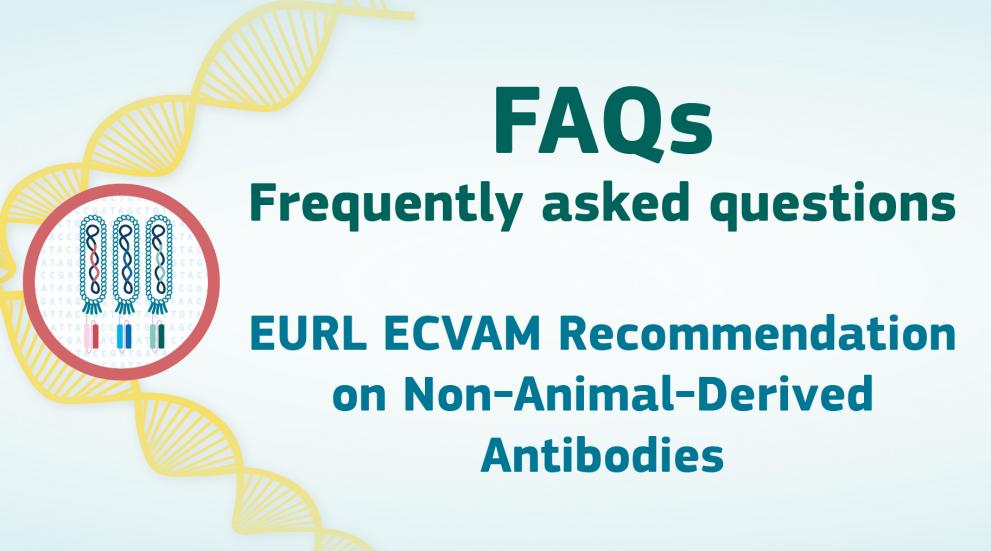
The JRC has published responses to frequently asked questions (FAQs) about the EURL ECVAM Recommendation on non-animal derived antibodies.
In May 2020 the JRC’s EU Reference Laboratory for alternatives to animal testing (EURL ECVAM) published a Recommendation on non-animal-derived antibodies. The Recommendation is based on the opinion of EURL ECVAM’s Scientific Advisory Committee (ESAC) and states that animals should no longer be used for the development and production of antibodies for research, regulatory, diagnostic and therapeutic applications where robust, legitimate scientific justification is lacking.
The frequently asked questions (FAQs) have been derived from reactions and enquiries gathered from several stakeholder organisations. In responding to these FAQs, EURL ECVAM aims to clarify several important issues and facilitate proper interpretation and communication of the recommendations made.
As stated by Maurice Whelan, JRC scientist and head of EURL ECVAM, "We hope that our responses to these FAQs will help people understand better the context and implications of our EURL ECVAM Recommendation on non-animal-derived antibodies and encourage them to take appropriate action where needed".
Addressing misconceptions and misinformation
The Recommendation does not impose a ban on the use of animals for the development and production of antibodies. Instead, it simply calls for proper adherence to the legal obligations adopted under Directive 2010/63/EU on the protection of animals used for scientific purposes.
This relates in particular to the evaluation process carried out by competent authorities in Member State and the need for case-by-case scrutiny of project proposals to ensure that the use of live animals for developing or producing antibodies is scientifically justified. In other words, if a scientifically valid alternative method exists, then it must be used.
Other FAQs that have been addressed include how the EURL ECVAM Recommendation was practically developed, the scope of the ESAC peer review and the conclusions drawn, current levels of animal use, and where to find more information. Another important issue that has been highlighted is the requirement set out in the Directive that only scientific grounds can be used to justify the use of live animals for scientific purposes.
According to Maurice Whelan, "It's important to us that people and organisations with an interest in this area take this opportunity to not only appreciate better what's actually said in the ESAC Opinion and our Recommendation, but also to gain a better practical understanding of Directive 2010/63, and the many scientific benefits offered by non-animal alternatives".
Related Content
Frequently asked questions (FAQs)
EURL ECVAM Recommendation on non-animal-derived antibodies
JRC Science for Policy Report: EURL ECVAM Recommendation on non-animal-derived antibodies
Details
- Publication date
- 14 December 2020
